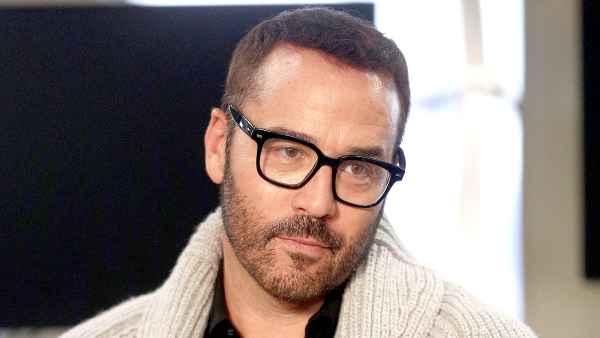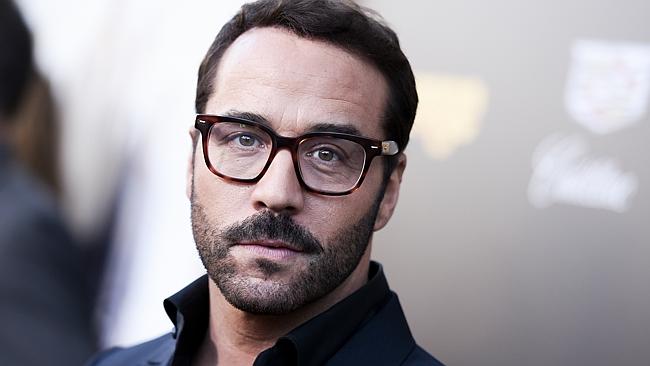A hair transformation refers to the process of significantly changing one’s hair appearance, whether it be in terms of length, color, texture, or style. It can involve cutting off long locks for a shorter and more manageable hairstyle, experimenting with different hair colors to showcase one’s personality, or using various hair products and tools to achieve a desired look. Hair transformations can range from subtle changes to dramatic makeovers, and they can be a great way for individuals to express themselves and boost their confidence. Whether someone wants to reinvent their look or simply refresh their current style, a hair transformation can be a powerful experience that can enhance their overall appearance and self-esteem.
Jeremy Piven’s Baldness Journey
Jeremy Piven bald hair journey has been nothing short of remarkable. The famous actor, known for his roles in hit TV shows like “Entourage” and “Mr. Selfridge,” has undergone a hair transformation that has left him with a full head of hair.
In the past, Piven struggled with thinning hair and bald patches, but he decided to take action and explore hair loss treatments. It became evident that he underwent a hair transplant procedure that has given him a new lease on life.
One telltale sign of his hair transplant is the scar from the Follicular Unit Transplantation (FUT) procedure. The FUT technique involves removing a strip of hair-bearing skin from the back or side of the head, which is then dissected into individual hair follicles for transplantation.
Jeremy Piven’s youthful appearance and impressive head of hair have caught the attention of many, inspiring others battling hair loss to consider similar treatments. His successful hair transformation adds his name to the list of celebrities who have opted for hair transplants, including Wayne Rooney, David Beckham, and Elon Musk.
Thanks to modern advances in hair transplantation, individuals experiencing hair loss can now regain their confidence and benefit from a fuller head of hair. Jeremy Piven’s journey is a testimony to the effectiveness of hair transplant procedures and the positive impact they can have on one’s overall appearance and self-esteem.
Hair Loss Causes
Hair loss can be caused by a variety of factors, both genetic and environmental. Understanding the causes of hair loss is essential in determining the most appropriate treatment options. From genetic predispositions to hormonal imbalances and lifestyle choices, this article will explore the different causes of hair loss and help shed light on potential solutions for those seeking to address this common concern.

Genetics and Pattern Baldness
Genetics plays a significant role in the development of pattern baldness, also known as androgenetic alopecia, a common form of hair loss that affects both men and women. These genetic factors determine an individual’s susceptibility to dihydrotestosterone (DHT), a hormone linked to hair loss.
Hair loss occurs when hair follicles shrink and produce shorter, thinner strands of hair. Genetic variations affect the sensitivity of hair follicles to DHT, an androgen derived from testosterone. People with a genetic predisposition may have hair follicles that are more sensitive to DHT, leading to shrinkage and the production of progressively finer hairs. Eventually, the hair follicles become too small to produce visible hair, resulting in a receding hairline or thinning crown.
While genetics is the primary factor in pattern baldness, other causes of hair loss include hormonal changes, certain medical conditions, medications, and inadequate nutrition. Hormonal imbalances, such as those experienced during pregnancy or menopause, can also trigger hair loss. Medical conditions like thyroid disorders, scalp infections, and autoimmune diseases can contribute to hair loss as well.
Understanding the genetic factors contributing to pattern baldness is essential in developing effective hair loss treatments. By targeting the root cause of hair follicle shrinkage and DHT sensitivity, treatments like hair transplant surgery or medications can help restore a fuller head of hair and enhance the overall appearance.
Other Possible Causes of Hair Loss
In addition to genetic factors, there are several other possible causes of hair loss. Hormonal imbalances can play a significant role in hair loss. Fluctuations in hormone levels, such as those experienced during pregnancy, menopause, or thyroid disorders, can disrupt the hair growth cycle and lead to shedding.
Certain medications can also have side effects that contribute to hair loss. Drugs used in chemotherapy, antidepressants, and blood thinners are known to cause hair thinning or even complete hair loss.
Various medical conditions can also affect hair growth. Scalp infections, such as ringworm, can lead to patchy hair loss. Autoimmune diseases like alopecia areata can cause the immune system to attack the hair follicles, resulting in hair loss.
Stress can be a major contributor to hair loss. When the body experiences significant stress, hair follicles can enter a resting phase and stop producing new hair. This can lead to a noticeable thinning of the hair.
Poor nutrition can also negatively impact hair health. Inadequate intake of essential vitamins and minerals necessary for hair growth, such as iron, vitamin D, and biotin, can result in weakened hair follicles and increased hair shedding.
While genetics may be the primary factor in hair loss, it is important to consider these other possible causes and address them to maintain a healthy head of hair.
Solutions for Hair Loss Treatment
Hair loss can be a distressing experience for both men and women. Thankfully, there are various solutions available for hair loss treatment that can help restore confidence and promote healthy hair growth. From advanced hair transplant procedures to topical treatments and lifestyle changes, these solutions address the underlying causes of hair loss and aim to rejuvenate the scalp for a fuller, thicker head of hair. In this article, we will explore some effective options for hair loss treatment and highlight the transformative results they can offer. Whether you’re dealing with pattern baldness, thinning hair, or just want to enhance your overall hair health, there is a solution out there for you. Let’s dive into the possibilities and discover how you can achieve a remarkable hair transformation.
Medication Options
There are several medication options available for the treatment of hair loss. These medications work by targeting the underlying causes of hair loss, promoting hair growth, and preventing further hair loss. While they can be effective, it is important to note that results may vary depending on individual factors such as the stage and severity of hair loss.
One commonly prescribed medication is minoxidil, which is available over the counter under various brand names such as Rogaine. This medication is applied topically and works by widening blood vessels, stimulating hair follicles, and prolonging the growth phase of the hair. It is suitable for both men and women.
Another medication option is finasteride, which is available in prescription form. Finasteride works by inhibiting the production of the hormone dihydrotestosterone (DHT) which can contribute to hair loss in individuals with male pattern baldness. This medication is only suitable for use in men.
While these medications can have positive outcomes, it is essential to understand their limitations. Medications may not work for everyone, and results may take time to become visible. Additionally, discontinuing the use of these medications may result in a reversal of their benefits.
Consulting a healthcare professional is crucial to determine the most suitable medication option for individual needs. They will consider various factors such as medical history, hair loss severity, and overall health to provide personalized recommendations. Remember, achieving desired results in hair restoration often requires a combination of medication, lifestyle changes, and possibly other treatments.
Hair Transplant Surgery
Hair transplant surgery is a popular and effective procedure for treating hair loss. This surgical procedure involves the transplantation of hair follicles from the donor area to the recipient area, resulting in natural-looking hair growth.
Before the surgery, local anesthesia is administered to ensure the patient’s comfort throughout the procedure. This numbs the scalp, making the surgery virtually painless.
During the surgery, hair follicles are carefully removed from the donor area, which is typically at the back or sides of the head. These follicles are selected based on their quality and suitability for transplantation.
The transplantation process involves making tiny incisions in the recipient area and then precisely placing the follicles into these incisions. This meticulous process ensures that the transplanted hair grows in a natural and aesthetically pleasing manner.
To achieve natural results, the hair transplant surgeon positions the follicles at similar angles to the surrounding hair. This attention to detail ensures that the transplanted hair seamlessly blends in with the existing hair.
After the surgery, the incisions are closed with sutures, which are meticulously placed to allow for optimal healing and minimal scarring.
Hair transplant surgery offers numerous benefits, including permanent and natural hair growth, improved self-confidence, and a restored youthful appearance. With advancements in technology and techniques, this procedure has become a reliable solution for individuals experiencing hair loss.
Overall, hair transplant surgery, performed under local anesthesia, with precise follicle removal and transplantation, provides natural and long-lasting results for those seeking to regain their hair and confidence.
Hair Transplant Procedure Overview
Hair loss can be a distressing experience for many individuals, affecting their self-confidence and overall well-being. Fortunately, advancements in hair restoration techniques have provided a reliable solution in the form of hair transplant surgery. This procedure involves the transplantation of hair follicles from a donor area to the recipient area, where hair loss has occurred. The process begins with the administration of local anesthesia to ensure the patient’s comfort during the surgery. The surgeon then carefully removes hair follicles from the donor area and places them into tiny incisions made in the recipient area. These follicles are positioned at similar angles to the surrounding hair to ensure a natural and seamless result. Once the surgery is complete, the incisions are closed with sutures, allowing for optimal healing and minimal scarring. With permanent and natural hair growth, a hair transplant procedure can restore a youthful appearance and boost self-confidence for those experiencing hair loss.

Pre-Operative Care and Planning
Pre-operative care and planning are crucial steps before undergoing a hair transplant surgery. These steps ensure that the procedure is safe and successful, leading to the desired outcome.
The first step in pre-operative care is consultation with a qualified hair transplant specialist or cosmetic surgeon. During this consultation, the surgeon will evaluate the patient’s hair loss pattern and discuss the goals and expectations for the surgery. This allows the surgeon to determine the most suitable hair transplant technique and create a personalized treatment plan.
Next, a comprehensive medical evaluation is conducted to assess the patient’s overall health. This evaluation helps identify any underlying medical conditions or medications that could affect the surgery. It also provides crucial information for the surgeon to determine the candidacy for a hair transplant procedure.
A detailed set of pre-operative instructions will be provided to the patient. These instructions may include guidelines on medications to avoid, smoking cessation, specific dietary considerations, and any necessary physical preparations. Adhering to these instructions is essential to minimize risks during the surgery and maximize the chances of a successful outcome.
Overall, pre-operative care and planning are vital to ensure a safe and effective hair transplant surgery. It allows the surgeon to assess the patient’s needs, plan the procedure accordingly, and provide necessary instructions to optimize results. Consultation and medical evaluation play a pivotal role in determining eligibility and establishing the foundation for a successful hair transformation.
The Operation Itself
The hair transplant procedure is an effective solution for restoring hair and addressing the issue of hair loss. There are several techniques used in the operation, including follicular unit transplantation (FUT) and follicular unit extraction (FUE).
During the procedure, healthy hair follicles are extracted from the donor area, typically the back or sides of the head, where the hair is genetically resistant to balding. These follicles are carefully harvested to preserve their integrity and maximize their survival rate.
In FUT, a strip of tissue containing hair follicles is surgically removed, and the donor area is sutured. The strip is then divided into individual follicular units, which are meticulously prepared for transplantation. Tiny incisions are made in the recipient area, and the follicular units are delicately implanted.
In FUE, individual hair follicles are extracted one by one using a specialized punch tool. The follicles are then transplanted into the bald or thinning areas. This technique does not involve a linear scar and allows for a faster recovery.
The hair transplant procedure is usually performed under local anesthesia, ensuring that the patient remains comfortable throughout the operation. The duration of the surgery depends on the extent of hair loss and the number of grafts being transplanted.
By transplanting healthy hair follicles from the donor area to the recipient area, the procedure encourages hair regrowth in the bald or thinning areas. Over time, these transplanted follicles start growing new hair, leading to a natural and permanent restoration of hair.
The hair transplant procedure involves the extraction and transplantation of hair follicles to address hair loss. With different techniques like FUT and FUE, patients can achieve a restored and youthful appearance. The surgery is performed under anesthesia, and the transplanted follicles promote healthy hair growth to provide long-lasting results.
Post-Operative Care and Recovery
After undergoing a hair transplant surgery, patients need to follow proper post-operative care instructions to ensure a smooth recovery and optimal results. Following the procedure, patients should expect some minor swelling, redness, and scabbing in the treatment area, which is normal and temporary.
To aid in the healing process, patients are advised to gently clean the scalp using a prescribed shampoo and follow the surgeon’s instructions regarding any medication or ointment usage. It is crucial to avoid any activities that may cause trauma to the transplanted area, such as rigorous exercise or direct sunlight exposure.
During the first few days after the surgery, patients may experience mild discomfort or soreness in the donor and recipient areas. This can be managed with over-the-counter pain medication as recommended by the surgeon.
Hair growth in the treated area generally begins within a few months after the procedure. Initially, the transplanted hair may shed, but this is a normal part of the process, and new hair will start to grow in its place. Patients can expect significant hair growth within 6 to 12 months, with continual improvement over the following months.
The use of local anesthesia during the procedure ensures that patients remain comfortable and pain-free. The incision made during the surgery is meticulously closed to minimize scarring, and any potential scarring typically becomes less noticeable over time.
By following post-operative care instructions and allowing for proper healing, patients can achieve successful hair restoration and enjoy the long-term benefits of their hair transplant surgery.
Benefits of a Hair Transplant Surgery
A hair transplant surgery offers numerous benefits to individuals experiencing hair loss. One of the main advantages is that it provides natural growth and fullness of hair in the treated areas, allowing individuals to experiment with different hairstyles and regain their desired look.
The procedure, performed under local anesthesia, ensures that patients remain comfortable and pain-free throughout the surgery. This enables the surgeon to meticulously close the incision in the donor area, minimizing visible scarring.
After the surgery, patients can expect significant hair growth within 6 to 12 months, with continual improvement over time. The transplanted hair not only looks natural but also allows individuals to style their hair as they desire, bringing back their confidence and youthful appearance.
Additionally, hair transplant surgery provides a long-lasting solution to hair loss. Unlike temporary treatments or cosmetic products, the transplanted hair follicles are permanent, allowing individuals to enjoy a full head of hair for years to come.
With the natural growth and fullness of hair achieved through a hair transplant surgery, individuals can confidently explore different hairstyles and enjoy a transformed look that matches their unique personal style.
Conclusion
Overall, the experiences of these famous individuals prove the effectiveness and lasting benefits of hair transplants. Their openness serves as an encouragement for others to explore this safe and effective solution to their hair loss struggles. With the advancements in the field of hair transplantation, individuals can now confidently pursue the possibility of regaining a head full of healthy hair.
